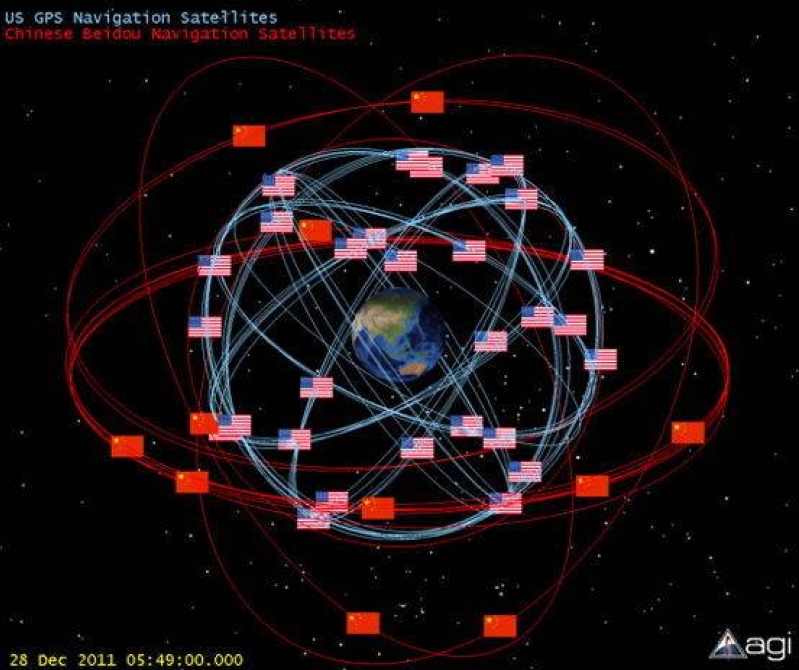
A new Chinese anti-satellite test could showcase an ability to reach medium-Earth orbit. Doing so, some analysts say, would underscore that country's ability to place not only the constellation of U.S. Global Positioning System navigational satellites at risk, but also a similar Chinese system, according to NBC News.
A set of three mysterious satellites has experts guessing about the Chinese space program's intentions. No one really knows what the Chinese are up to and everything is speculation.
That appears to be the consensus of space experts tracking a set of Chinese spacecraft, according to NBC News. Some have speculated that the Chinese are testing possible anti-satellite technology, while others have described the satellites as prosaic probes meant to sharpen the country's overall space skills.
One of the trio of new Chinese satellites, Shiyan-7, has since made a sudden maneuver. That satellite had already finished a series of orbital alterations that put it close to one of the companion satellites with which it was launched, the Chuangxin-3, according to The Huffington Post.
"Suddenly, however, it made a surprise rendezvous with a completely different satellite, Shijian 7 (SJ-7, Practice 7), launched in 2005," noted Marcia Smith, a space policy analyst and founder and editor of SpacePolicyOnline.com.
Under debate are the orbital antics of several newcomers to space - the Chinese satellites Shiyan-7, Chuangxin-3 and Shijian-15 - which all launched into orbit together on July 20. Experts are also discussing the actions of China's elder spacecraft Shijian-7, which launched more than eight years ago.
Soon after the July launch, it was known that one of the three satellites carried "a prototype manipulator arm to capture other satellites," a tool that might be "a predecessor of an arm destined to be aboard China's large space station, set for launch in 2020 or soon thereafter," wrote Bob Christy on zarya.info. (SpacePolicyOnline.com also reported the news.)
Christy could not confirm at the time which of the three satellites carried that arm.
When the three satellites were hurled skyward in July, the Chinese language press specifically discussed "space debris observation," "mechanical arm operations" and the testing of "space maintenance technologies," said Gregory Kulacki, a senior analyst and China project manager within the U.S.-based Union of Concerned Scientists' Global Security Program, according to The Huffington Post.
"This suggests one possible project for the mission is the experimental collection of space debris," Kulacki told SPACE.com.
The recent July 20 launch also resembles the lofting of the Changxin 2 and the Shiyan 3 satellites in November 2008, Kulacki said. Changxin 2 was an Earth observation microsatellite, while Shiyan 3 was an experimental spacecraft designed for space weather experiments, he said in The Huffington Post.
But both China and the United States are experimenting with close-proximity maneuvers in space, said Michael Krepon, co-founder of the Washington, D.C.-based Stimson Center and director of its South Asia and Space Security programs. Both nations have demonstrated ASAT capabilities, Krepon told Space.com.
"Beijing and Washington have a choice to make, the same choice that Moscow and Washington faced during the Cold War," Krepon said, according to NBC News.







